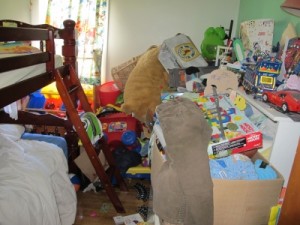Beginning the Eviction (Unlawful Detainer) Process in Washington: Notice, Service of Process, and the Show Cause Hearing
Washington has a very streamlined legal process for landlords to evict a tenant called an unlawful detainer action (assuming, of course, that the landlord is justified in doing so). RCW 59.12.030 defines unlawful detainer, and outlines many of the grounds for eviction. Because the unlawful detainer action simplifies and expedites the eviction process for the landlord, Washington has very specific statutory rules that landlords (and their attorneys) must follow in order for the eviction to be effective. Proper notice and proper service on the tenant are essential parts of an unlawful detainer action.
Notice
Before the landlord can begin the actual legal action against the tenant, notice must first be given to the tenant to vacate the premises for reasons stated in RCW 59.12.030. To do so, the landlord must follow one of three options outlined in RCW 59.12.040 by either (1) leaving a copy of such notice with the tenant personally, or (2) leaving a copy with a person at the residence and also sending a copy via mail to the residence, or (3) posting a copy in a conspicuous place at the residence, leaving a copy with anyone at the residence, and sending a copy via mail to the residence. As a practical matter, it would be wise to document each step in this process to prove compliance with this procedure, which is usually done by affidavit.
If the tenant does vacate the premises, the landlord can immediately take possession of the premises and, pursuant to RCW 59.18.310, can seek to recover from the tenant outstanding rent owed, if any. If the tenant left behind personal property at the premises, look here for a discussion on what the landlord may or must do.
Commencing the Action (Summons and Complaint)
If the tenant does not vacate the premises, an unlawful detainer legal action is required to effectively evict the tenant. To begin, just like in any other civil action, the landlord must file a summons and complaint (or, better yet, have an attorney do so). If rent is owed, the complaint should provide the amount. The summons must state, among other things, the timeframe within which the tenant must respond. See RCW 59.12.080; RCW 59.18.365. In other civil actions, the timeframe is typically 20 days, but because this action is more streamlined, RCW 59.12.070 allows a landlord to require response within as few as seven days (although no more than thirty days).
To properly serve the defendant with the summon and complaint, the same process is required for service as in other civil actions, see RCW 59.18.365, which generally requires personal service, or if the court allows, by publication.
Show Cause Hearing
Along with the summons and complaint, the landlord can also obtain from the court, and serve on the tenant, an order requiring the tenant to appear in court at a show cause hearing. See RCW 59.18.370. Conveniently, the timeframe for the tenant to appear at this hearing can be exactly the same as the timeframe as required for the tenant to respond to the summons and complaint (i.e., within as few as seven days, but no more than thirty days). What makes this hearing so useful for the landlord is that, at the hearing, the burden is on the tenant, rather than the landlord, to show cause (or prove) why the property should not be restored to the landlord. This hearing is the most expeditious way for the landlord to retake possession of the premises because, if the tenant cannot do so, or if the tenant fails to appear altogether, then the court will typically order the sheriff to restore property to the landlord. The court may also grant to the landlord other requests made in the complaint, such as payment of outstanding rent.


 After 45 days from the date of the notice the landlord may sell or dispose of the personal property and apply any income from the sale against moneys due, including actual or reasonable costs of drayage and storage, whichever is less.
After 45 days from the date of the notice the landlord may sell or dispose of the personal property and apply any income from the sale against moneys due, including actual or reasonable costs of drayage and storage, whichever is less.
 Banks/servicers largely follow the same pattern as the owner-occupied loan modifications. First, they require a signed forbearance agreement, then they require an extensive disclosure of the investor’s financial status in the form of a “Hardship Packet”. When they have those two things in hand, the servicer/bank will decide whether to modify the loan. The following is what is most often required:
Banks/servicers largely follow the same pattern as the owner-occupied loan modifications. First, they require a signed forbearance agreement, then they require an extensive disclosure of the investor’s financial status in the form of a “Hardship Packet”. When they have those two things in hand, the servicer/bank will decide whether to modify the loan. The following is what is most often required: